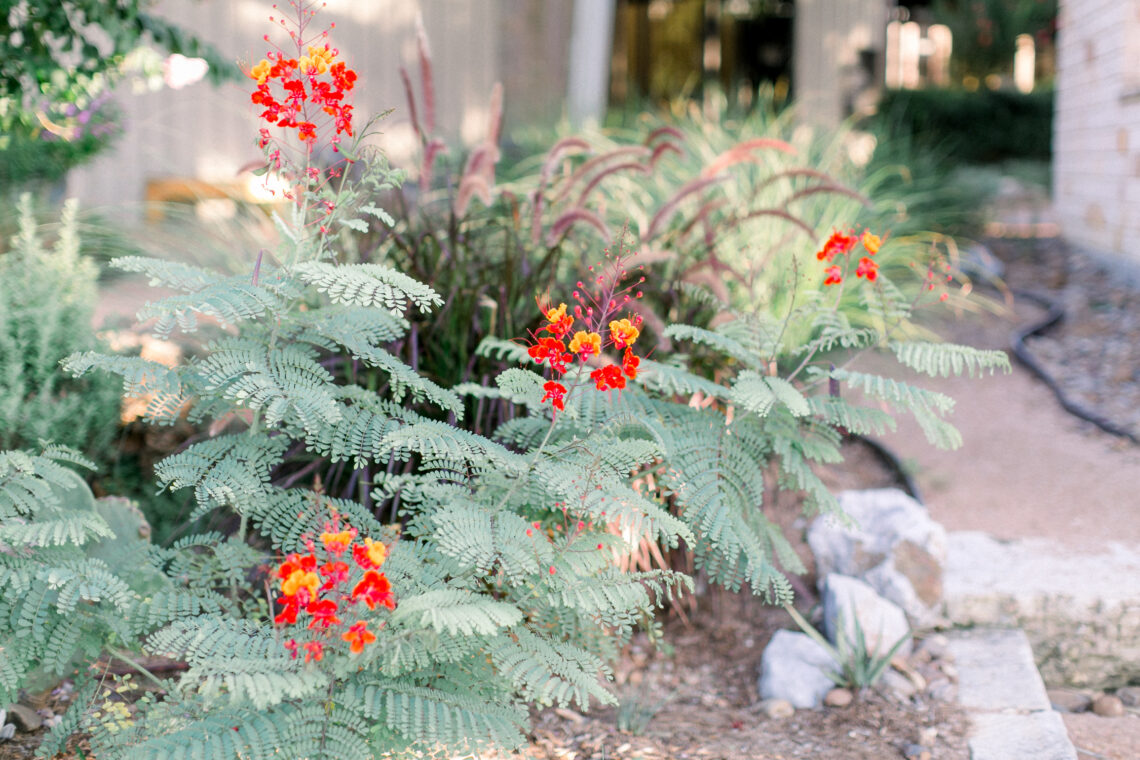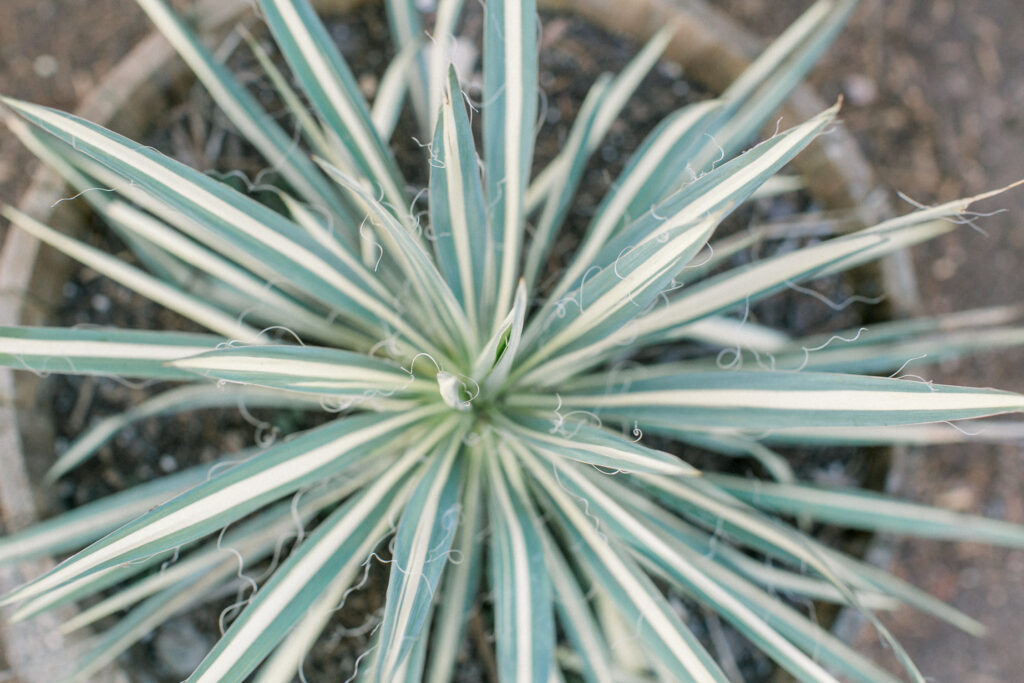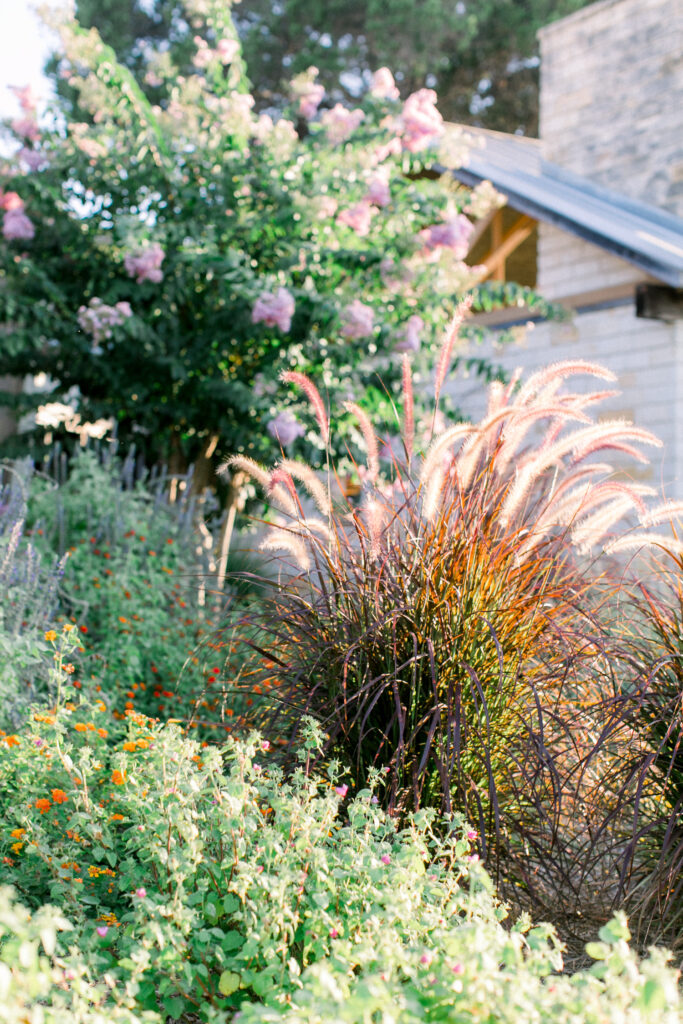
Design Your Landscape the San Antonio Way
Post Summary: Tips for Using Native Plants in Your Texas Hill Country Landscape
Spring is upon us and so is gardening season. To help you plan your San Antonio landscapes, we’ve asked our friends Elizabeth and Adam at Grafted Design for a few tips and specific suggestions on landscaping in Central Texas.
Grafted Design is based right out of New Braunfels and serves the Greater San Antonio area. Their expertise is in using native plant species to create landscapes that are not only beautiful but also sustainable.
After reading the tips that Elizabeth shared with us, we hope that you’ll visit their website and support this incredible small business!
“Successful gardening begins with selecting the right plant for the right place.”
-Cheryl Hazeltine
The Diversity of Central Texas
Central Texas is home to several areas that come together where different soil and vegetational regions meet. Similar to a big pizza that has been sliced and diced, you can loosely use IH- 35 as a dividing line, separating the Blackland Prairies to the east, and the Edwards Plateau and Hill Country to the west. Just south of San Antonio, the Rio Grande Plains extend all the way to the Gulf of Mexico, and the Post Oak Plan, which contains sandy soil, extends to the east.
Needless to say, there is no “one size fits all” approach for planting in this area because the regions can vary based on soil content and climate, But, with the right knowledge and planning, your landscape design can be implemented to fit your needs and your style.
San Antonio receives an annual average rainfall of 31”. Because of this, you need to be wise on how you choose your plant selections. Typically, you can plant from mid-March through early November. Our short winter season lasts only a few months, but during that time, temperatures can dip below freezing, bringing sleet and sometimes snow. It is wise to wait until the spring before you start planting. Texas’ erratic climate can fool newcomers to the area who aren’t used to the drastic temperature swings. One day in December may be 75° and sunny, but if a “Blue Norther” blows through, the next day could be freezing temperatures and rain. It’s best to wait!
Know Thyself and Know Thy Yard
Socrates’ wise words can also be applied to personal garden maintenance. You need to know yourself and you need to know what type of gardener you are!
Will you be out there every other day pruning, watering, and raking? Or do you want a hands-off approach that requires as little attention as possible? Maybe you fall somewhere in the middle.
You enjoy getting your green thumb dirty every once and awhile, but hey, let’s not get carried away here! If you can decipher how much time you want to spend in your yard on a weekly basis, it will be much easier to choose your landscaping motif.
What type of yard do you have? Do you have rocky limestone terrain or are you surrounded by clay soil? A great idea is to look around your neighborhood and see what grows well in your area. When planning your space, it’s also ideal to add layers that give your garden depth, dimension and texture. Be aware of how much sunlight that area receives. Is it morning light or late afternoon? What will the water retention look like? Are you placing plants by a roofline where there could be a lot of rain run-off? Start paying attention to the spots where you would like to do some planting, and you will save yourself time and energy by planning accordingly.

The Beauty of the Xeriscape
As the population continues to grow in Central Texas, it is vitally important that we strive to conserve our water resources. The best method for this in home landscaping is to utilize a xeriscape design while planning your yard.
According to Webster’s Dictionary, the term “xeriscape” is defined as “a landscaping method developed especially for arid and semiarid climates that utilizes water-conserving techniques (such as the use of drought-tolerant plants, mulch, and efficient irrigation).”
The xeriscape approach in landscaping encourages water conservation by utilizing native plants that already thrive in your specific climate. They require little to no watering, and are able to withstand the swings in temperature that are common in Central Texas. It is also important to limit the amount of lawn space (turf grasses such as St. Augustine require a lot of water), irrigate efficiently, and use mulch to retain moisture and regulate soil temperature.

People can sometimes think of the word “xeriscape” as “zero-water” as they imagine visions of rocky flowerbeds peppered with prickly cactus and parched yucca. Though some of the Texas xeriscape does incorporate desert flora and fauna, there is also a variety of other foliage from which to choose, and the variety allows you to create your own style of landscaping. And, it does not need to be an “all or nothing” approach. You can primarily use a xeriscape design, while still incorporating small elements that might require a little more attention or maintenance. Whatever your preference, many styles of landscaping can be achieved in Central Texas with proper planning and execution.
Though Texas summers can often feel like living in a sun-scorched inferno (hello, August!), there are actually many native plants that thrive in the Texas heat and in the dry climate.
The long, hot growing season lends itself to a vast array of plants that will do well from April through October. Pride of Barbados, Esperanza, and Nandina are all varieties that can give your yard a lush, tropical feel without needing much maintenance or watering. Texas Purple Sage and Salvia thrive in this area as well, as they are accustomed to 100+ degree temps, and can also withstand the occasional cold snap that may occur during the winter months.
Listed below are some of the common plants that can be used in flower beds in Central Texas. Once established, these varieties tend to do very well in a xeriscaped yard, and require very little attention (if any!).
| Our Favorite Plants for Full Sun: Eleagnus Lantana Skullcap Texas Purple Sage Thryallis Twisted Blue Yucca | Our Favorite Plants for Partial Sun/ Shade: Aralia Butterfly Iris Fox Tail Ferns Japanese Maiden Grass Viburnum Wormwood |
At Grafted Design, we work hard to design and plan an outdoor space that meets all of our client’s needs.
If you would like more information on using our services, please send us an email at [email protected] or you can visit our website at www.graftedesign.com.
Good Luck with your Gardening!

